I am 38 years old this year, started trading cryptocurrencies at 26, and reached an eight-figure capital from 2020 to 2022. Now, every time I go out, I stay at high-end hotels around 2000 yuan, and my luggage and hat might carry crypto symbols. It’s much more comfortable than what the older generation did in physical businesses or what the post-80s did in e-commerce. Today, I’ll share a few valuable insights. These experiences are worth 60 million, and I hope they can help you.
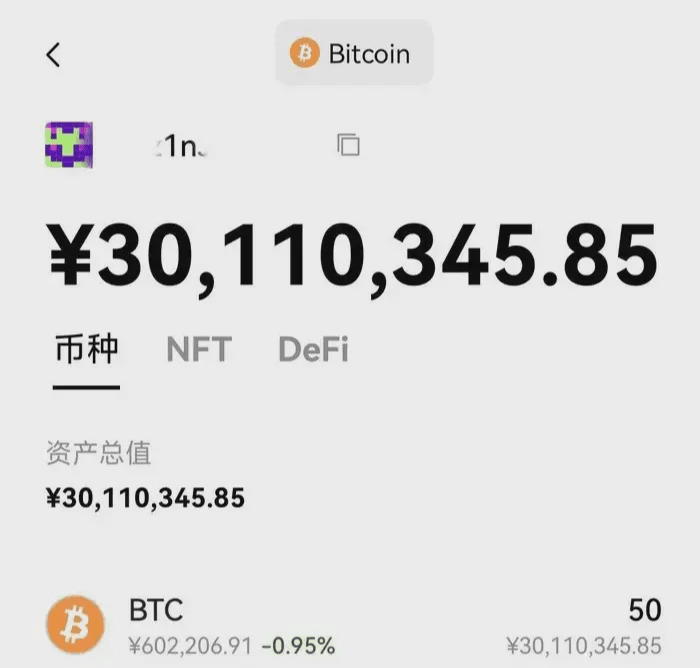 1. In most cases, Bitcoin is the leader of price movements in the crypto market. Hard currencies like Ethereum may sometimes move independently of Bitcoin, but altcoins generally cannot escape its influence.
1. In most cases, Bitcoin is the leader of price movements in the crypto market. Hard currencies like Ethereum may sometimes move independently of Bitcoin, but altcoins generally cannot escape its influence.
2. Bitcoin and USDT move inversely; if you notice USDT rising, be wary of Bitcoin dropping. When Bitcoin rises, it is a suitable time to buy USDT.
3. Between midnight and 1 AM, price spike phenomena often occur, so domestic crypto friends can place their desired buy price low before sleeping and their desired sell price high, you might just get a deal while sleeping.
4. The time frame from 6-8 AM every day is a moment to judge whether to buy or sell, and also a point to determine the price movement for the day. If the price has been dropping from midnight to 6 AM, and continues to drop during this period, it is a buying or averaging opportunity, and the price is likely to rise for the day. Conversely, if the price has been rising from midnight to 6 AM, and continues to rise during this period, it is a selling opportunity, and the price will likely drop later in the day.
5. 5 PM is an important time point according to rumors in the community. Due to time zone differences, American crypto friends are waking up to work, which may cause price fluctuations; some significant rises or falls have indeed occurred at this time, so be especially cautious.
6. There is a saying in the crypto world about 'Black Friday'. There have been instances where significant drops occurred on Fridays, but there have also been cases of increases or sideways movements, which isn’t particularly reliable. Just keep an eye on the news.
7. If a cryptocurrency with a certain trading volume drops, don’t worry. Patience will bring back your investment, usually within 3-4 days for short-term, or a month for long-term. If you have extra USDT, consider averaging down to pull the price down, which can help you recover faster. If you don’t have extra money, just wait; it won’t disappoint you. Unless you really bought into I coin.
8. Trading spot means holding the same cryptocurrency long-term yields greater returns than frequent trading, it just depends on whether you have the patience to hold. I bought Dogecoin at 0.1 and now it has multiplied over 20 times in the crypto space.
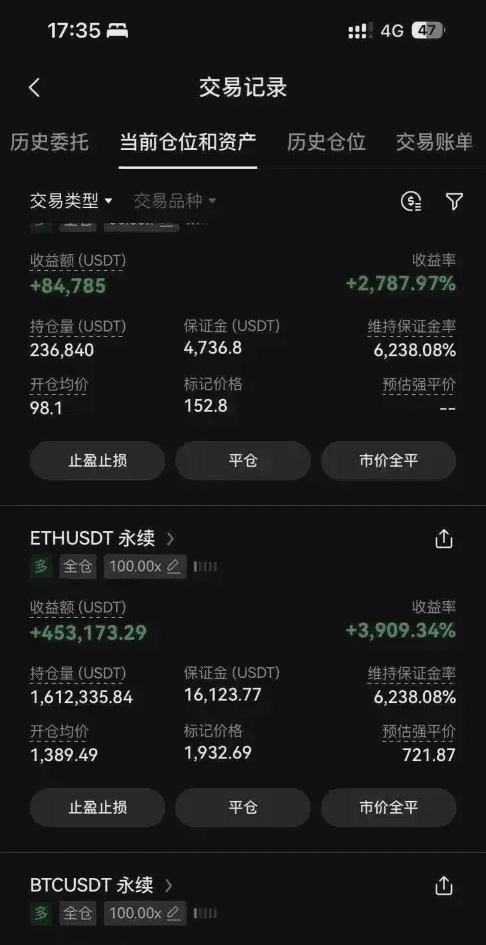
Today, I will share a few valuable insights. These experiences are worth 60 million, and I hope they can help you.
1. Choose the right platform: Avoid 'eating client losses'.
Top recommended platforms: Binance, OKX (low fees, good depth, no lagging orders). Avoid small platforms (in 2023, a certain platform maliciously manipulated prices leading to collective liquidation of users).
Key Indicators: Check 'funding amount' (over $1 billion), 'number of holders' (over 500,000), 'historical spike records' (the less, the better).
2. Position control: Use the '1% rule.'
Protect your capital with a single position: Each position opened should not exceed 1% of the total funds (e.g., for 100,000 yuan capital, a single position opened should not exceed 1,000 yuan in margin).
Total position limitation: All contract margin should not exceed 20% of total capital (to avoid simultaneous liquidation of long and short positions).
Example: With a capital of 10,000 yuan and 10x leverage, the margin for a single trade must not exceed 100 yuan (corresponding to a contract value of 1,000 yuan), and total position margin must not exceed 2,000 yuan.
3. Technical Analysis: 3 essential indicators to help you judge the direction. MA Moving Averages: The 50-day moving average crosses above the 100-day moving average (Golden Cross), bullish; crosses below (Death Cross), bearish.
MACD: Red bars lengthening (strong bullish), green bars lengthening (strong bearish), divergence signals (price rises while bars shrink, could indicate a peak).
Support and Resistance Levels: Check previous highs and lows (e.g., Bitcoin at $32,000 is strong support, $40,000 is strong resistance), open positions in line with the trend after breaking through.
4. Ordering Techniques: Capture the 'golden moments' of sharp drops and rises. Open long positions during a sharp drop: if the price drops over 5% and hits strong support (e.g., Bitcoin dropped to $28,000 in May 2025, rebounding 2% within 30 minutes, opening long could yield 20%).
Open short during sharp rises: if the price increases over 10% and reaches a resistance level (e.g., Bitcoin failed to break $45,000 rapidly fell, open short to earn 15% within 1 hour).
Taboo: Do not open positions during sideways fluctuations (70% of the time is spent in sideways, frequent operations will definitely lead to losses).
5. Closing strategy: The money you’ve earned is real money. Close when your preset profit is achieved (e.g., at 20% gain) immediately take profit, do not be greedy.
Stop-loss liquidation: If the price breaks support or resistance levels, stop loss unconditionally (e.g., if the price drops below previous lows after opening long, exit immediately, do not gamble on a rebound).
Time stop loss: If the position remains open for more than 4 hours without reaching expectations, force liquidation (to avoid staying up all night watching the market; 2023 statistics show that users holding positions for over 12 hours had a liquidation rate 3 times higher).
3 Core Concepts Every Newbie Must Learn: Understand these 3 points to minimize losses by 80%!
1. Leverage: It is not a double-edged sword, but rather a 'dragon-slaying sword'. Commonly used leverage: 10x (low risk), 50x (medium risk), 100x (for experts).
Deadly misconception: 100x leverage ≠ earning 100 times; rather it means 'a 1% fluctuation results in a 100% loss of capital' (e.g., under 100x leverage, with 10,000 yuan capital buying 1 million assets, a 1% drop means a loss of 10,000 yuan, leading to immediate liquidation).
Iron Rule: Newbies should only use 10-20x leverage, while veterans should not exceed 50x (2023 statistics: 99% of users using 100x leverage faced liquidation within three months).
2. Stop-loss and take-profit: The 'lifesaver' more important than making money. Stop-loss: Set in advance 'how much loss must I exit' (e.g., for a capital of $10,000, set a stop-loss at 5%, automatically liquidating at a loss of $500, avoiding holding until liquidation).
Take Profit: Automatically cash out when reaching target returns (e.g., if expecting a 20% gain, sell automatically after a profit of 2,000 yuan to avoid a reversal causing losses).
Real case: In 2024, Bitcoin crashed by 30%. Users who set a 10% stop loss only lost 10% of their capital, while those who did not set a stop loss faced total liquidation.
3. Funding rate: Earning fees from counterparties while lying down. Principle: When long and short positions are unbalanced (e.g., 80% users are long), the platform will make long users pay funding fees to short users, and vice versa.
Practical skills: In extreme market conditions (like Bitcoin breaking key resistance levels), open small reverse positions to earn funding fees, which can yield a daily return of 0.1%-1% (data from a certain platform in 2025 indicates that users who long-term earn funding fees have a stable annual return exceeding 15%).
3 Advanced Strategies Used by Experts
1. Hedging Strategy: The 'win-win formula' that makes money whether prices rise or fall. Operation: Open both 10x long and 10x short positions (each occupying 5% of the total position). If the price fluctuates over 2%, close the losing position while holding the profitable one.
Case Study: Bitcoin fluctuating between $30,000 - $40,000 using hedging strategies can yield a stable 5%-10% monthly profit with near-zero risk.
2. Ladder-style averaging down: The 'bottom-fishing artifact' in a sharp drop. Steps: If the price drops by 10%, open a 1% position long; if it drops another 10%, open a 2% position; drop another 10%, open a 3% position, and so on. Advantage: Reduces average cost, a 15% rebound can turn losses into profits (e.g., if opening long at $30,000 and dropping to $24,000, total position is 6%, a rebound to $27,600 means breaking even).
3. Capital Management: Use the 'liquidation price calculator' as a lifesaving tool: input margin, leverage, and position quantity in the exchange app to automatically calculate the liquidation price (e.g., for 10x leverage and $10,000 margin, liquidation price = opening price - opening price × 10%).
Iron Rule 4: Ensure the liquidation price is at least 20% away from the current market price (e.g., if opening long at $30,000 for Bitcoin, set liquidation price at $24,000, leaving enough buffer space).
Futures are not a cash machine, but a battlefield of 'cognitive realization'!
1. First practice with a simulated account: Use 10,000 yuan in virtual funds for 3 months. Recommended platform: Binance 'Contract Simulation Account', 1:1 restore of real trading, and you can reset if you lose everything.
Goal: Achieve 'no liquidation within 3 months, win rate over 50%' before injecting real funds.
2. Always remember: Futures are 'icing on the cake,' not 'gambling for a comeback.'
Correct Mindset: Use no more than 20% of spare money to trade futures; your main income is fundamental (an office worker earning 3,000 yuan can invest 600 yuan in futures, don’t risk your entire fortune).
3. Liquidation is not the end, but the beginning of growth. Every liquidation serves as the best teacher: keep a record of the reasons for the liquidation (was it due to high leverage? No stop loss? Or emotional trading?), forming your own 'avoidance guide.'
Today I will talk about a summary of my years of trading experience as a free share, hoping to help everyone!
Because if you want to change your fate, you must give the crypto space a try. If you can’t get rich in this circle, ordinary people will have no chance in this lifetime.
I believe that first and foremost, excellent traders must have the patience to endure in order to safeguard the prosperity!
Frequent small profits indicate that one’s judgment ability in the market is limited, and it is not possible to accurately predict the cycles of price rises and falls. A good solution is to improve one’s trading skills for better judgment and analysis of investment targets.
Next, I will share some trading experiences that I hope can help investors in need:
1. Choose familiar cryptocurrencies and limit the number of varieties you focus on. Understand the relationship of price fluctuations for better grasp of price trends. Avoid focusing on too many varieties, as energy is limited, and it is not feasible to profit from many different assets; don't challenge your limits.
2. The importance of position management: Improper management can lead to total loss of capital with no chance for recovery. Here, it is recommended that margin occupy about 30% of the capital, with a maximum of 50%. Of course, when encountering favorable market conditions, it is permissible to increase positions. Two points to note during trading: First, do not average down on floating profits; second, do not average down on floating losses. Learning to wait is a compulsory course in trading.
3. Develop a trading plan and avoid frequent trading. Frequent trading consumes a lot of energy and incurs relatively high transaction costs. In uncertain market conditions, finding profitable opportunities is not easy. If the results turn out unfavorable, it can deplete your capital and affect your mindset.
4. Maintain a good mindset during trading, enhance learning, summarize frequently, and exercise more.
5. Set take profit and stop loss levels. Take profits in time and do not hold onto losing trades. The main reason for losing money is often due to holding onto losing positions.
Technical Knowledge
1. Introduction to Bollinger Bands: Practical insights. 2. Dow Theory. 3. Main force chips distribution analysis. 4. Introduction to KDJ indicators and practical insights. 5. Elliott Wave Theory. 6. What are resistance and support? 7. What are trends and how to judge them? 8. Random index, stochastic index. 9. How to apply Fibonacci? …
Basic Knowledge
1. What are cryptocurrency futures contracts?
(1) Definition of futures contracts
(2) Types of contracts
(3) Three elements of futures contracts.
2. What is cryptocurrency leveraged trading?
(1) What is leverage?
(2) Example of leveraged trading
3. What is the principle of hedging and risk reduction?
(1) What is hedging?
(2) What to do if you are stuck after buying high in the crypto market?
(3) How to hedge in the cryptocurrency market?
4. Key points to pay attention to in futures trading.
(1) How to allocate positions?
(2) Where should stop-loss and take-profit levels be set?
2. Supply and Demand Trading Method to Find Key Ranges
Supply and demand relationships are consistent across markets: when imbalances begin to occur, prices will move or reverse. The supply area is where professional traders short sell, while the demand zone is where they buy.
Demand zones generally have two forms of representation.
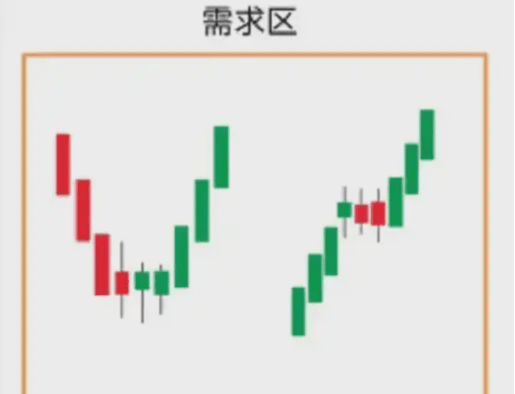
First type: decline, enter zone, rise.
Second type: rise, enter zone, rise.
Similarly, the supply zone also has two forms of representation.
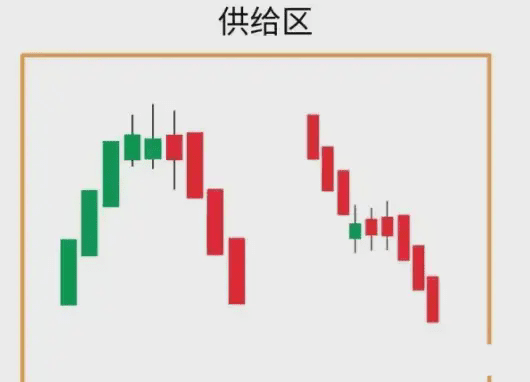
First type: Rising, entering zone, falling;
Second type: Falling, entering zone, falling.
So what should we do when we see a demand zone?
In the market, when a demand zone appears, we expect the price to rise here, buying when it retraces to the demand zone.

The supply zone is the opposite of the demand zone. We expect the price to drop here and sell when it retraces to the demand zone.
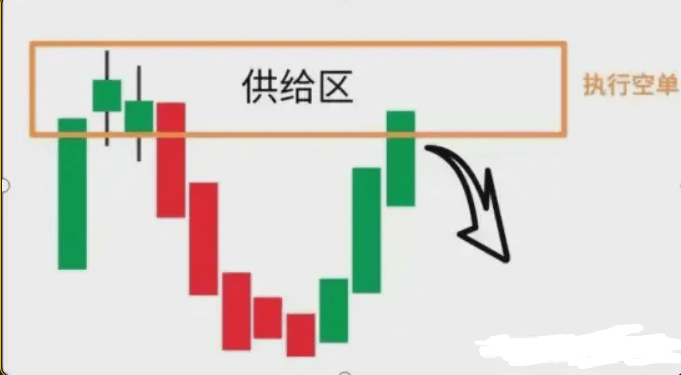
In simple terms, when prices go up and remain stable, we should position long orders; when prices fluctuate downwards and remain stable, we should position short orders.
Let me give an example, the most typical would be the 519 period!
At that time, it was a great entry point, and shortly after the formation of this demand zone, the price returned to the demand zone multiple times (at the time, around $30,000), so this demand zone is likely to be a good trading opportunity.

If the price continues to decline after the first retracement, we will see a sharp rise in the demand zone. Corresponding to the market conditions at that time, after the second drop below $30,000 post-519, there was a nice rebound. Because we have just discussed, similar to the principle of supply zones, if institutions still have unexecuted long contracts in the demand zone, they will pull the price back into the zone shortly.
3. Using Fibonacci Method to Find Positions
Fibonacci retracement is the most commonly used method in trading to find support and resistance levels.
Generally, we will draw lines from the highest price point during a certain time period to the relative lowest price point, forming 9 straight lines (segments), which are the retracement levels we need to pay attention to. Each line has a certain supportive or suppressive effect, depending on the market position.
(1) Hold patiently for a breakthrough.
For short cycles of 1-4 hour charts, drawing Fibonacci retracement lines can lead to purchases at the 0.236 position, which is relatively secure. It is certain to test the 0.382 position, and at this moment, you should exit to prevent a drop!
(2) Profits from short selling and long buying
Using Fibonacci retracement lines on the daily chart can yield good short-term profits at the 0.236-0.382 levels through high sell and low buy.
(3) Be cautious when pulling teeth from a tiger's mouth.
Be especially cautious in the 0.382-0.618 zone, as there is high potential for significant price changes. Try not to apply it to small cycles.
(4) High breaks must retrace.
A test at the 0.618 level is definitely going to see a retracement, so entering at this point generally yields good profits!
The example of Fibonacci retracement lines is not very easy to illustrate, and when drawing lines, do not combine a single time period; instead, divide into multiple periods and cycles, looking for high and low points. However, it is worth noting that it is quite useful; it can also be applied for short-term trading, buying at support and selling at resistance.
That's about it. Futures trading is like gambling, but many still cannot resist the temptation of getting rich overnight. Of course, I am not saying you shouldn't trade cryptocurrencies; the purpose of writing this article is to encourage you to trade futures rationally. Therefore, I hope this content can be helpful to everyone!


